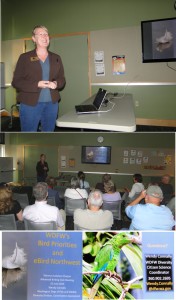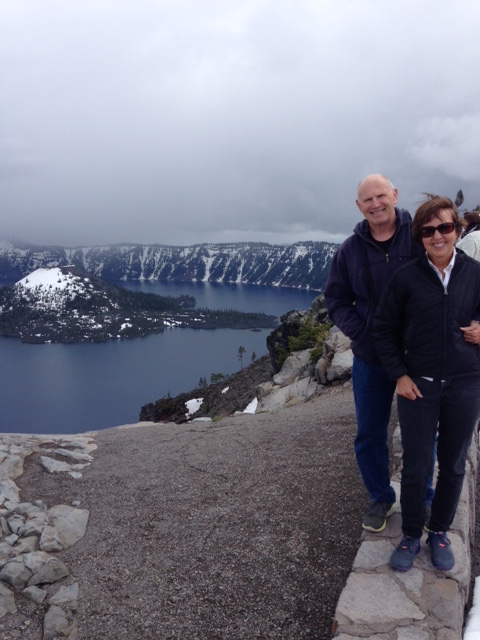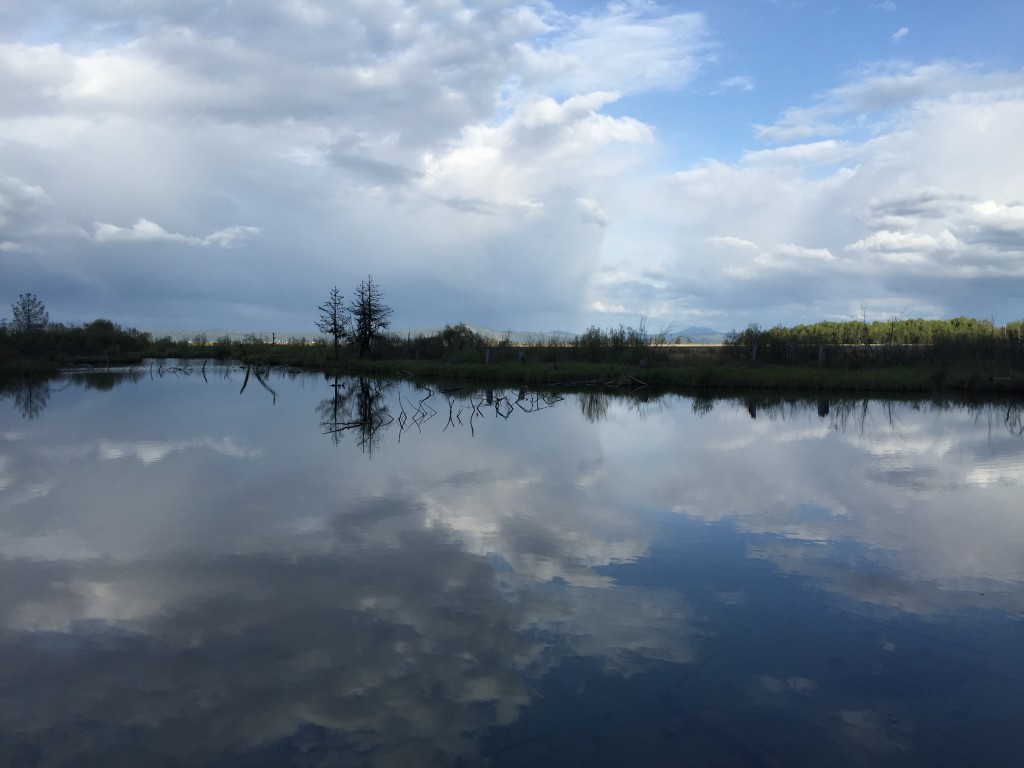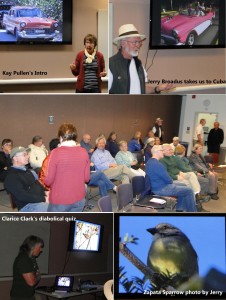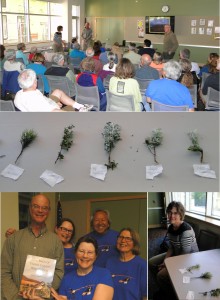by Jerry Broadus
The United States embargo of Cuba, and that country’s reaction to it, has resulted in a fascinating birding destination unlike any other in the Caribbean. It is now a cliché that the country is trapped in a time warp, with hundreds of classic American cars from the 1940’s and 1950’s still running on coastal roads in a relatively unspoiled and uncrowded landscape. The limestone hills of Vinales, the 1.5 million acre wetland of Zapata National Park, the beaches of the Bay of Pigs and of the keys (Cayos) of the Caribbean, together offer easy opportunities to spot most of the island’s 26 endemic species, as well as many others of the 370 bird species recorded there.
Travel to Cuba for birding is becoming easier, but there are still challenges. The Presidential directive from December of 2014 has led to a loosening of Treasury Department regulations in an effort to normalize relations with the Raul Castro Government. The embargo is still in place, so there are still prohibitions, from both the United States and the Cuban governments, however much of the old “red tape” no longer applies.
A little background information on Cuba helps one to plan for a trip. Cuba requires a tourist visa for U.S. citizens. Cuba has an ambassador to the U.S., but as yet there is still no embassy. There is, instead, a Cuba Interest Section housed in the Swiss Embassy in Washington D.C. In the past, obtaining a Visa could take a lot of time, as the Cuba Section could not pay for a real staff using funds in any U.S. Bank. That has changed, in that the regulation now specifically allow for the Ambassador to use our banking system, but obtaining a visa is still easiest with a little help, which I will explain later.
Cubans are generally poor by our standards. According to Time Magazine, the average wage is $20 per month. A professional government guide might aspire to twice that. In addition, the Cuban system guarantees free housing, health care, and education through college. The health care system is excellent, the literacy rate is over 90%, and almost all the people you meet speak English. Basic food staples are rationed, and small organic gardens are found everywhere, but if a person sells food to another he or she must share the profits with the government. So all basic needs are well covered, but “spending money” is generally non-existent.
Before Raul took over, private enterprise was illegal. All approved work was for the government, which controlled how jobs were handled. It is still very common for a person to work only a few days a week, and then take a few days off while another person fills in at the same job, to spread out the work. Now, certain small businesses, generally limited to services such as hair parlors, small appliance repair, or family cafes, can be run as private enterprises. Cafes quickly sprang up outside of the cities, especially along the coast, and took on the generic name “Paladares,” which came from a popular Brazilian soap opera. There is, of course, a real black market (especially in car repair) that is largely based on barter rather than money.
Thus it should not be a surprise that few people bother with bank accounts. Consequently, although it is now legal to use U.S. credit cards in Cuba, you will probably not find anyone (outside of the gasoline stations, which sell fuel at about one U.S. dollar per litre) who will take one. Plan on taking cash for any expenses that are not prepaid. You will have to change your money into Cuban Convertible Currency (CUC) when you arrive in Cuba. (Generally you will do this at the airport. We saw a few ATM machines in Havana, but they had very long lines).
There are good to excellent hotels, both in Havana and in older resort areas, which generally predate the revolution (1959). There are also new beach resorts, mostly financed by Canadian or Brazilian companies operating under cooperative agreements with the Cuban Government. Essentially, all the hotels are government run, and have the only legal internet available for public use (it’s expensive; out of reach for most Cuban citizens). The new resorts have Cuban run television, where I was able to watch the Super Bowl streamed from Mexico. You can rent private rooms in some people’s houses in popular tourist destinations, but it is difficult to find them.
Transportation is one of the biggest problems in Cuba. New cars are too expensive for Cubans to buy, and no one with an old car will sell it. There are a few car rental agencies at the airport, but way too much competition for the number of cars they have. You don’t see many buses outside of Havana. Daily transportation, outside of Havana, generally involves hitching a ride (if an employee is lucky enough to be provided a car at work, he or she is required to pick up hitch-hikers) using a horse drawn carriage, a bicycle, or by hopping on a tractor pulled trailer (in some areas this includes school children).
The lesson in all of this is that Cuba is a difficult country for an independent traveler to negotiate. You can do it if you have the time to tolerate standing in a lot of lines, including standing beside the road waiting for a ride. Finding a room, or even a meal, might involve relying a lot on word of mouth. For this reason alone I recommend taking a tour, and letting the operator arrange everything.
When Clarice and I went, we had to fill out a few forms to allow us to participate under the tour operator’s license. As a U.S. citizen you can only travel to Cuba to participate under one of 12 approved categories, and tourism is not one of them. This is why you are still reading in news reports that you can’t go to Cuba just to lie on the beach. Actually, birding is one of the best categories to fall under. General bird watching is probably too “touristy,” but “bird surveying,” as part of a conservation agenda, is permitted under the “humanitarian” category. We went under the humanitarian license of Caribbean Conservation Trust (www.cubirds.org) as conservation bird surveyors. To fulfill U.S. requirements, we had to send in a one paragraph resume of bird survey experience, and apply for and carry a separate letter for each of us stating that Caribbean Conservation Trust would provide a leader who would make sure we followed the rules (our leader was Alvaro Jaramillo). The “rules” included keeping a bird list with numbers of individual birds sighted, and handing it in to the Cuban Natural History Museum, which was all handled by Alvaro and the operator.
Then, we had to charter a flight from Miami to Havana, which had to be provided by a separate company (of course, Caribbean Conservation Trust contacted that company for us as well). It was the charter company that obtained and sent us our tourist visas. Finally, our group met at the charter desk in Miami where an American Airlines representative checked all of our paperwork before giving us boarding passes. That paperwork check was essentially the extent of U.S. government control over our group. When we returned, of course U.S. customs knew where we had been as we were all on the charter flight back from Havana, and they did ask us what we did. “Bird Surveying” was an acceptable answer.
In Havana, Cuban immigration and customs was very thorough and professional, but also slow. Each of us was interviewed separately, as well as photographed and our passports scanned. They do indeed stamp your passport.
So what has changed? Now, the treasury regulations (which can be found on-line by Googling “Treasury regulatory amendments to Cuba travel”) allow for travel under a “general license”. In practice, that means you no longer have to fill out advance forms describing your plans to the U.S. government. Instead, what I have seen is a one page form with all the approved categories listed on it, where you merely check one and sign it (just remember that conservation work is “humanitarian”). Also, charter flights will soon be available from New York City, Baltimore, Chicago, and Los Angeles. Regularly scheduled flights from the U.S. are still restricted, so you still have to charter, and the charter company will still handle getting your visa. Also, of importance is that the regulations now have no limit as to how much you can spend in Cuba to fulfill your approved purpose. Since many of the bird survey areas are conveniently located near beach resorts, as a bird surveyor can now use them without any advance permission from the U.S. Finally, it is well reported that you can now bring back rum and cigars, up to $100 in value, as part of a $400 general allowance in imported goods.
Ferry travel to Cuba from Florida has also been approved by the U.S. Government, but the Cuban Ambassador has warned that it will not be allowed except under strict Cuban scrutiny. The U.S. companies generally appear to be “crowd sourcing” right now to obtain funding.
If you read the rest of the regulations you will see a lot of actions intended to foster independent businesses, communication, and banking in Cuba. These, of course, could provide the fuel for the expected changes that you have read about (“Go to Cuba now before Starbucks and McDonalds get there”). Change will come, but probably on Cuba’s terms. I believe the Cubans are serious about maintaining their Socialist system, if they can get the cash to run it. Right now, they rely to a great extent on import duties and on partnerships with foreign companies running resorts. I doubt that they will welcome “Americanization” without putting their own stamp on it, which will likely delay the interest of many American institutions. But, on the other hand, the Cuban Government is planning to build a “free port,” which may portend a change in attitude.
So, if you want to go look at Cuba’s wonderful birds and experience its friendly and very safe travel, start considering booking a tour. Our provider, Caribbean Conservation Trust, has handled birding tours in Cuba for over 18 years, for several organizations including the Western Field Ornithologists. They will be handling the upcoming BirdWatching Magazine tour in February, 2016, with Arturo Kirkconnell (co-author of the Field Guide to the Birds of Cuba). Another agency we have used in the past, including for our trek across Panama, is JB Journeys (www.jbjourneys.com) which is run by friends of ours and is very responsive. They plan on offering a birding trip, including cultural activities, in May of 2016 (and possibly earlier, in February) also with Arturo Kirkconnell. There are surely many more being planned as you read this.


